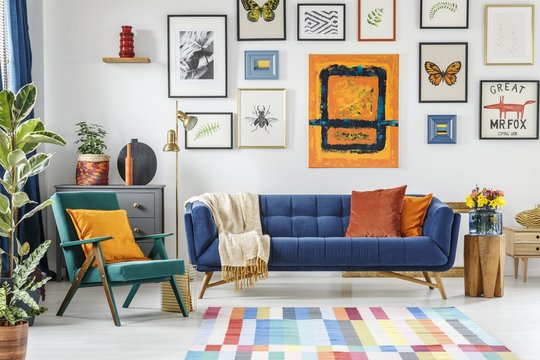A colorful living room isn’t just about bold paint or patterned pillows—it’s about creating a space that reflects your personality and uplifts your everyday life. Adding color can completely transform the mood of your home, make a small room feel larger, or turn a dull corner into a cozy retreat. Whether you love vibrant jewel tones or a mix of soft pastels, a colorful living room can be both stylish and inviting when done right.
In this guide, we’ll walk you through everything you need to know to design a colorful living room—from choosing a palette to mixing patterns and finding inspiration for your own home.
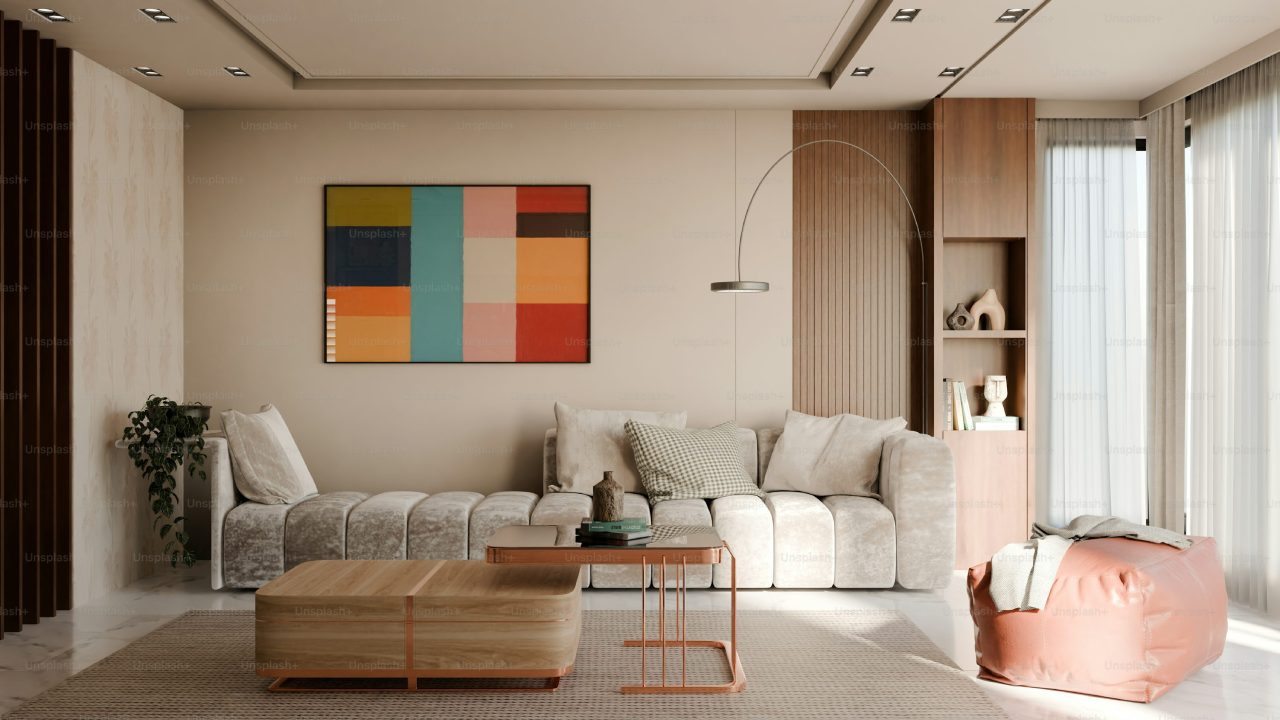
Table of Contents
Start with a Color Palette You Love
Designing a colorful living room starts with choosing the right palette. Your color scheme sets the tone for the entire space, so it’s important to pick hues that not only look good together but also feel good to you.
Warm or Cool?
First, decide whether you prefer warm tones (like reds, oranges, and yellows) or cool tones (like blues, greens, and purples). Warm tones can make your living room feel cozy and energetic, while cool tones create a calming and relaxed vibe.
The 60-30-10 Rule
A good rule of thumb when designing a colorful living room is the 60-30-10 rule:
- 60%: The dominant color (walls, large furniture)
- 30%: The secondary color (rugs, curtains, accent chairs)
- 10%: A bold accent (pillows, artwork, small accessories)
This formula helps create visual balance while still letting your creativity shine.
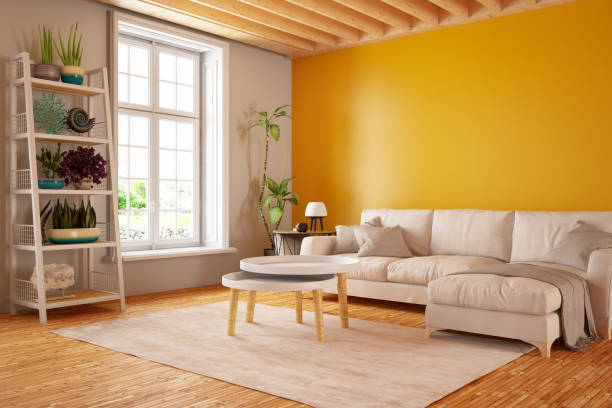
Choose a Colorful Focal Point
Every colorful living room needs a standout feature. This could be a bright sofa, a dramatic rug, or a statement wall that pulls the whole space together.
Bold Furniture
A colorful sofa or armchair instantly grabs attention. Try shades like emerald green, mustard yellow, or royal blue for a dramatic touch. If you’re unsure, start with one bold piece and keep other furniture neutral.
Artwork or Wall Decor
Oversized artwork or a gallery wall filled with color is an easy way to bring life into your living room. It also lets you rotate styles without a full redesign.
Accent Walls
Painting just one wall in a deep or contrasting color adds visual interest without overwhelming the space. You can also use wallpaper with geometric or floral patterns for a unique touch.
Mix Patterns and Textures for Depth
Color isn’t the only tool in your design kit—textures and patterns help add richness and personality to a colorful living room.
Layering Textures
Mix velvet with linen, wood with metal, or matte finishes with glossy ones. A velvet sofa, a leather pouf, and a woven rug can all live together in harmony when tied together with a unifying color.
Mixing Patterns
Don’t be afraid to combine stripes, florals, and abstract prints. Just stick to a common color family to keep the room feeling cohesive. If your rug has bold colors, let your cushions echo those tones.
Use Accessories to Add or Change Color
One of the easiest and most affordable ways to create a colorful living room is through accessories. Think of your living room like a canvas and your accessories as the paint.
Easy Swaps
Throw pillows, curtains, lampshades, and vases are simple to switch out seasonally or when your taste changes. This gives you flexibility without committing to a full makeover.
Plants and Flowers
Greenery naturally complements a colorful living room and adds freshness. You can also bring in colorful blooms in vases to match your palette.
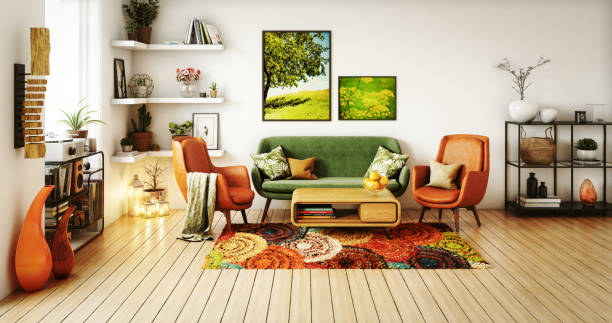
Layout Ideas for Colorful Living Rooms
The way you arrange your furniture also affects how your colors are perceived. Strategic placement can help balance bold shades and make your space feel intentional.
Open Concept
In open-plan homes, use rugs or furniture arrangements to visually separate the living room while keeping the color flow consistent throughout.
Cozy Corners
In smaller homes, focus your color in one area—like a reading nook with a bright chair, colorful rug, and patterned curtains—to create a cozy zone full of personality.
Lighting Matters More Than You Think
Color looks different depending on the lighting. A color that looks rich in daylight may feel dull under artificial light, so it’s important to consider your lighting choices.
Natural Light
If your living room gets lots of natural light, most colors will shine. Use sheer curtains to let the light in while maintaining privacy.
Artificial Light
Choose warm white bulbs for a cozy, colorful living room vibe. Add dimmable options to create different moods throughout the day.
Colorful Living Room Inspiration: Real-World Ideas
Sometimes, the best way to design your own space is to get inspired by others. Here are a few popular styles and how they use color effectively.
Boho Chic
This style uses an eclectic mix of bright hues, vintage furniture, and natural textures. Layer rugs, pillows, and art for a playful and relaxed look.
Modern Glam
A colorful living room with jewel tones like sapphire and ruby, paired with gold accents, gives off a luxurious feel. Think velvet sofas, statement lights, and glossy finishes.
Scandinavian With a Twist
Scandi style doesn’t have to mean all neutrals. Add pastel blues, mustard yellows, and sage greens to a white base for a soft yet colorful space.
Mid-Century Modern
This style is perfect for a colorful living room. Incorporate bold orange, teal, or avocado green furniture and keep lines clean and sleek.
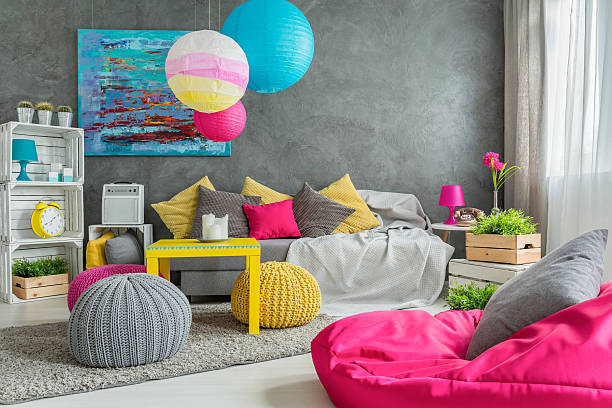
Final Thoughts
A colorful living room is more than just eye-catching—it’s an expression of who you are. Whether you go big with bold walls or keep it subtle with accessories, there’s no wrong way to add color to your space. Start small, test what feels good, and let your room evolve naturally.
If you’re looking for even more unique ways to transform your home, don’t miss our detailed guide on Sunken Living Room Design Ideas. Discover how thoughtful layouts and architectural features can create cozy, inviting spaces that perfectly complement your colorful living room design.


